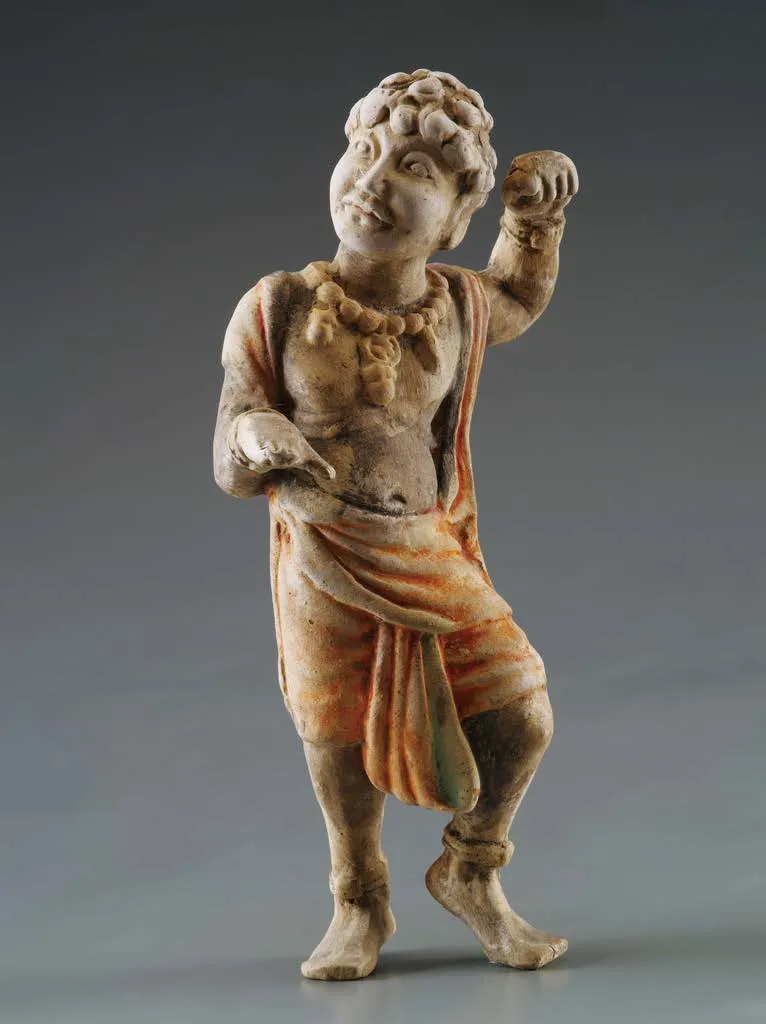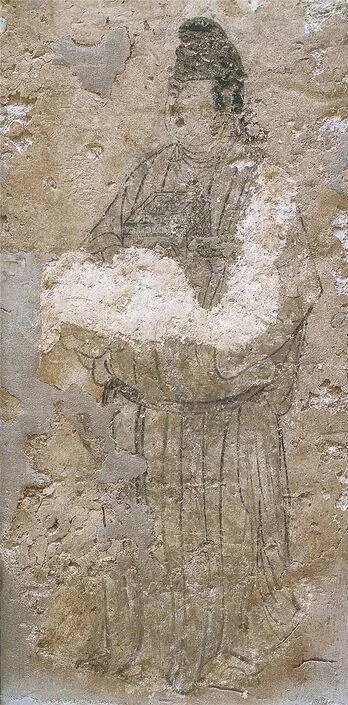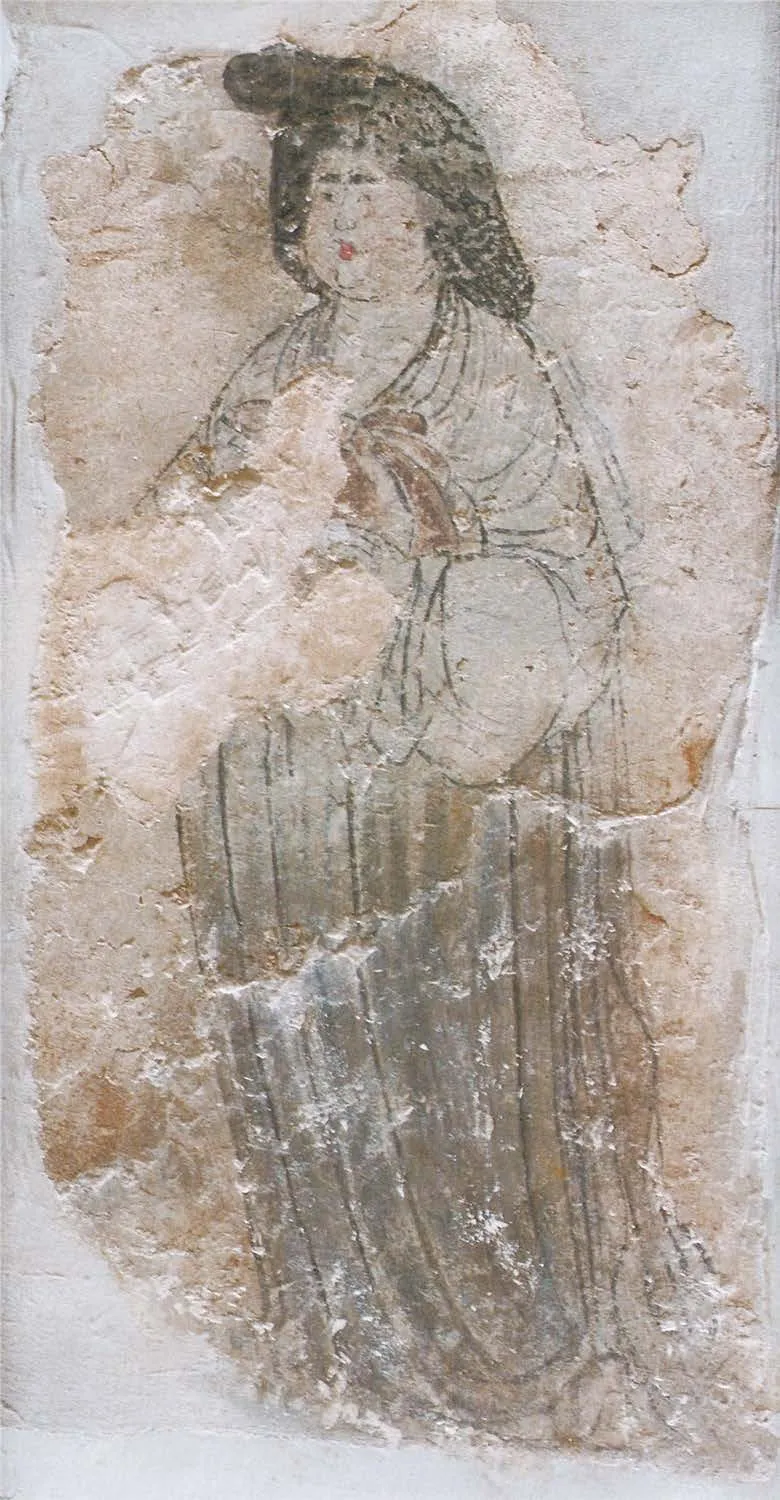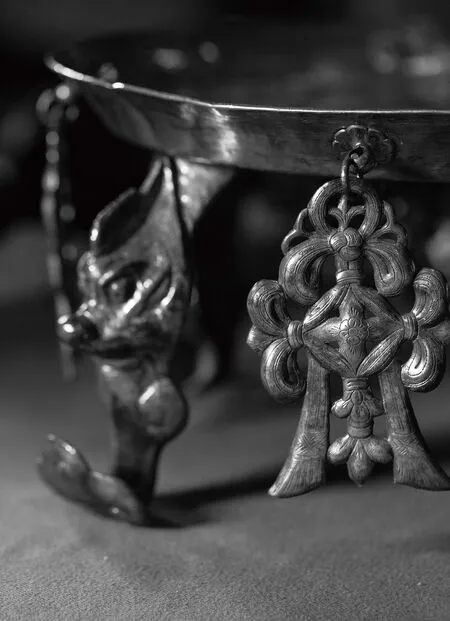尽展盛世大唐的风华
2018-11-28陈思静
文本刊记者 陈思静

胡人备马图Barbarians and horses
在中国历史的广袤苍穹中,大唐是极为璀璨的星辰。那里不仅有催马战犹酣的潇洒英姿,持戈卫社稷的壮怀激烈,也有长安水边多丽人的宜人风景,万国衣冠拜冕旒的昂扬气象,汇集四方奇风异俗的博大胸怀,呈现出雍容华贵与文明开放的恢弘气象。9月4日至11月3日,在中国国家博物馆举行的“大唐风华”展览,从陕西历年出土的文物中精心甄选能够代表盛唐发展水平的代表性物证,从文化、生活、艺术、中外交流及宗教信仰等诸多方面,全方位、立体化地展现了盛世大唐的绝代风华。
“今年以来,中国国家博物馆本着不求所藏、但求所展,开放合作、互利共赢的基本理念,积极主动加强与地方文博机构交流合作,共同推出地方古代精品文物展览系列。”中国国家博物馆副馆长陈成军介绍,此次展览由中国国家博物馆与陕西省委宣传部、陕西省文物局联合主办,陕西历史博物馆承办,陕西省考古研究院、法门寺博物馆、西安博物院、西安碑林博物馆、昭陵博物馆、乾陵博物馆、西安市文物保护考古研究院、长武县博物馆等9家兄弟文博单位共同协办,是中国国家博物馆携手地方共同举办古代精品文物系列展览的又一重要成果。
展览分为“文武安天下”“皇室的珍宝”“长安多丽人”“骑猎散歌尘”“大唐异乡客”“学理共归真”6个部分,汇集近120件(套)唐代精品文物。文物数量虽然不是特别多,但是文物从陕西运到国博时一共装了22个箱子,远远超过了过去一般文物展览装箱的数量。“因为这些文物里有10幅壁画、 7块墓志,这类文物过去一般很少出展。由此可以看出策展人对唐代文物新的认识和新的考量。”陕西历史博物馆文物保管部副部长贺达炘说。
唐代文物展览一直是博物馆展览的重要题材之一,除了中国国家博物馆、陕西历史博物馆和河南博物院通史陈列中的隋唐部分以外,国内外博物馆每年都会举办主题不同的专题展览。这些展览丰富着观众对唐代艺术、文化和历史的认知,也使唐代文物逐渐为人们所熟悉。因此,中国国家博物馆策展人赵永在策划时有一些新的考虑:“从内容上,因为展览并不能完全展现一个时代全部的原貌,所以基本上展现唐代几个重要的方面,并尽量对文物的内涵有更丰富的阐释,使它更切入主题。在形式上以壁画和墓志为中心和线索,配合相关的文物展出。”
展览的第一部分,策展团队以马璘墓志、唐俭墓志配合相应的文官俑与武官俑等相关文物来表现文臣武将的风采;在第二部分,用何家村窖藏一组表现炼丹的金银器,以及法门寺地宫一组茶具和熏香的金银器来表现“皇室的珍宝”的概念。“这批金银器虽然有不同的解读,但是很大程度上是和皇家有关系的,包括法门寺出土的金银器上有篆刻的铭文,很清楚地显示这是当时皇帝供奉给法门寺的。”赵永解释,“而何家村窖藏不管是和邠王府有关,还是和租庸使刘震有关,还是最近林梅村老师所说的和大明宫琼林库宝藏有关,它和皇室都是有关系的,所以我们把这些组合在一起,配合地方官员进奉的银盘、银盒、银铤等器物,作为一个主题来单独展示。从这个角度来讲,既展示了当时的金银工艺技术,又展示了当时宫廷奢华的生活。”
此外,展览中许多精品文物还是首次出馆展出,如陕西历史博物馆韩休墓的《高士图》《武惠妃敬陵壁画》,西安碑林博物馆的《苏谅妻马氏墓志》《米继芬墓志》,中国国家博物馆的智藏禅师舍利函具等。
极尽工巧的何家村窖藏和法门寺地宫珍宝,展现唐代时尚风俗的壁上丹青和勒铭存记的墓志,表现胡风汉俗的三彩陶俑和多元共存的宗教文物,莫不精美绝伦,不仅凝聚着那个时代的珍贵记忆,而且已经成为中华民族文化基因的重要组成部分。“唐代是中国历史上最为强盛,最具活力,也是最为开放包容的时代之一,它在政治、文化、艺术等很多方面都对后世产生了很大的影响,成为我们中华民族文化基因中的一部分。希望通过此次展览,通过对历史的回顾,既能够了解大唐的风采,也能够启发我们对未来的一种思考。”陕西历史博物馆副馆长程旭说。

彩绘陶文官俑Painting pottery officials

彩绘黑人立俑Painted black standing figure
In the vastness of Chinese history, the great Tang Dynasty is like an extremely stunning star, which not only shows a rush of heroic warfare, the enthusiasm of soldiers,but also the pleasant scenery of beauties at the waterfront of Chang'an, the high-spirited atmosphere of the world's worships and the broad-mindedness of embracing the whole world, presenting a graceful, luxurious and open civilization.From September 4thto November 3rd, the "Glory of Great Tang" exhibition, held at the National Museum of China, has selected the representative materials that can represent the development level of the Tang Dynasty from the cultural relics unearthed in Shaanxi and showcased the glory of Tang Dynasty in an all-round and three-dimensional manner from culture, life, art, Chinese and foreign exchanges and religious beliefs and other aspects.
"Since this year, the National Museum of China has been pursuing the basic concepts of focusing on exhibition rather than exhibits, open cooperation and mutual benefit,proactively promoting exchanges and cooperation with local cultural institutions, and jointly launching a series of exhibitions concerning the local ancient fine cultural relics,"said CHEN Chengjun, deputy-director of the National Museum of China. According to him, the exhibition was jointly organized by the National Museum of China, the Publicity Department of Shaanxi Provincial Party Committee and the Shaanxi Provincial Cultural Relics Bureau. It was hosted by the Shaanxi History Museum, with assistance from nine peers nationwide, including Shaanxi Provincial Institute of Archaeology, Famen Temple Museum, Xi'an Museum, Xi'an Forest of Steles Museum, the Zhao Temple Museum, the Qian Temple Museum, the Xi'an Cultural Relics and Archaeology Research Institute, and the Changwu County Museum.
The exhibition is divided into six parts: " Establishment of Nation", "Royal Treasures", "Beauties of Chang'an", "Riding and Hunting Songs", "Foreigners of Tang Dynasty" and"Science and Reunification", collecting nearly 120 pieces(sets) of boutique cultural relics of Tang Dynasty. Although the number of cultural relics is not particularly large, the cultural relics have been loaded with 22 boxes from Shaanxi to the National Museum of China, far exceeding the number of general cultural relics in the past. "Because there are 10 murals and 7 epitaphs in these cultural relics, which have rarely been exhibited in the past. It shows the curator's new understanding and considerations of the Tang Dynasty relics,"said HE Daxin, deputy-director of Cultural Relics Protection Division of Shaanxi History Museum.
The Tang Dynasty cultural relics exhibition has always been one of the important subjects of museum exhibitions.In addition to the parts of Sui and Tang Dynasties in the National Museum of China, the Shaanxi History Museum and the Henan Museum, the museums at home and abroad hold different thematic exhibitions each year. These exhibitions have enriched the audience's understanding of the art,culture and history of the Tang Dynasty, and made the cultural relics of the Tang Dynasty gradually familiar amongst people. Therefore, ZHAO Yong, curator of the National Museum of China, has some new considerations in planning: "From the perspective of content, as the exhibition cannot fully reveal the original appearance of an era, it basically shows several important aspects of the Tang Dynasty, endeavoring to have a more abundant interpretation of the connotation of the cultural relics, so that it is more related to the theme. In the aspect of form, it focuses on murals,epitaphs and clues in connection with related cultural relics."

彩绘贴金骑马俑Painted gold horse-riding figures
In the first part of the exhibition, the curatorial team used the epitaph of Ma Rong and that of Tang Jian to combine with the corresponding tomb figures of civil and military officials and related cultural relics to express the glory of these figures. In the second part, it employed a group of gold and silver wares to express alchemy by collection unearthed at Hejia Village, and also a set of tea sets and incense sticks of gold and silver in the Famen Temple to express the concept of"Royal Treasure"."There are different interpretations of these gold and silver wares, but it is largely related to the royal family. There are engraved inscriptions on the gold and silver vessels unearthed at Famen Temple, which is very clear that this was the emperor's offering to the Temple," Zhao Yong explained. "Whether the collection of Hejia Village is related to the Bin Mansion, or related to the official LIU Zhen, or concerning the collection of Qionglin Storage of palace of Ming Dynasty recently mentioned by professor LIN Meicun, it bears a relationship with the royal family, so we put these collection combined with the silver plate, box, enamel and other utensils that local officials have put in as a themed exhibition to show to the public separately.From this point of view, it shows the gold and silver craftsmanship at that time, and also luxury life in court."
In addition, many of the fine cultural relics in the exhibition were exhibited for the first time, such as the Scroll of Gentlemen from HAN Xiu's Tomb of the Shaanxi History Museum, the murals on the Jing Ling Tomb of Tang Dynasty's Concubine Wuhui, the Ma's Epitaph, wife of SU Liang of the Xi'an Forest of Steles Museum, the MI Jifen's epitaph, and the relics box of Buddhist Master Zhicang of the National Museum of China amongst others.
The extremely exquisite workmanship of Hejia Village relics and the palace treasures of Famen Temple, the epitaphs and murals demonstrating Tang Dynasty's fashion customs, the three-colored pottery and the diversified religious relics of barbarians and Han nationalities are so exquisite beyond comparison, not only condensing the precious memories of that era, but also becoming an important part of the cultural genes of the Chinese nation.
"The Tang Dynasty is the most powerful, dynamic and one of the most open and inclusive periods in China's history. It has exerted great influence on later generations in many aspects, such as politics,culture and art, becoming the cultural gene of our Chinese nation. I hope that through this exhibition and the review of history, we can not only understand the greatness of Tang Dynasty, but also inspire us to think about the future," CHENG Xu, deputy director of Shaanxi History Museum said.

捧盒男装侍女图Maids in man's clothing holding boxes

捧包裹侍女图Maid holding parcels

鎏金卧龟莲花纹五足朵带银熏炉及炉台(局部)Gilt turtle-lotus-pattern five-feet silver oven and stove (Partial)
